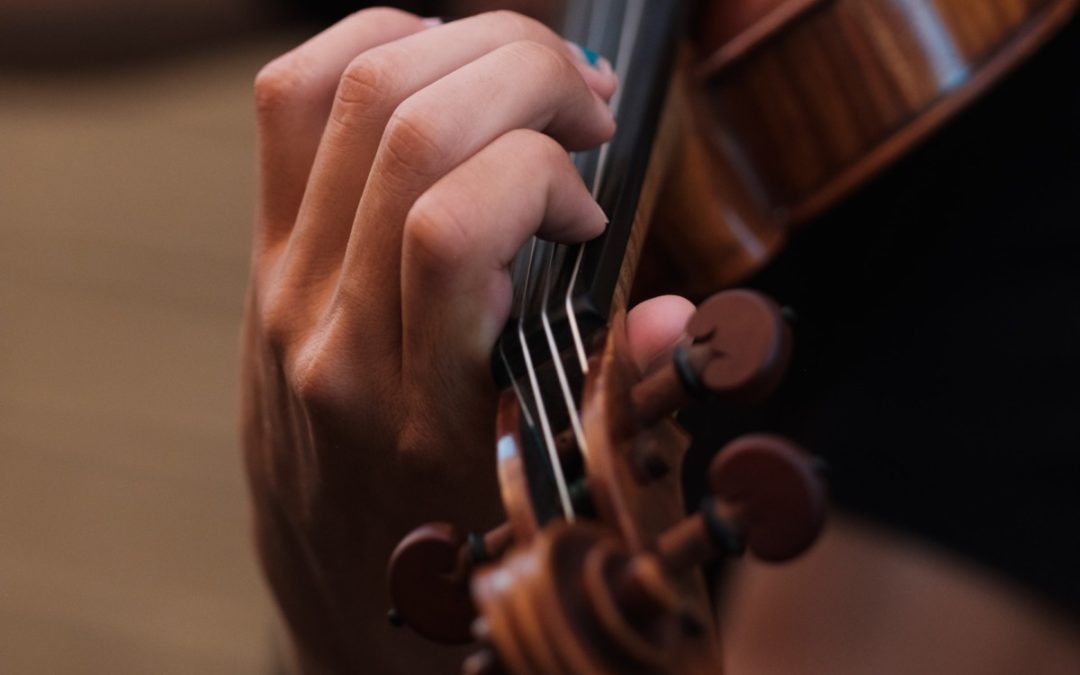As a music teacher, teaching violin requires a good amount of planning, preparation, organization, goals and objectives.
But more than that, there has to be a few different approaches depending on the student.
When it comes to violin, a student’s age can vary from a 6 year old to maybe a more experienced musician who wants to experiment with a second instrument.
But of course this can also be applied to teaching other instruments, so let’s dive into the specifics of learning how to play violin.
Posture
This is something that needs to be reminded to students every once in a while after teaching it for the first time.
The idea is to remind your students to keep an upright posture, but remain loose and flexible, from your knees up through your neck. Keep the violin parallel to the floor. In the process of playing, you will invariably move the violin up and down, but your home base posture should have the violin aligned parallel to the floor
How to Hold the Violin and the Bow

This is one of the most important parts of teaching a young musician how to play the violin, and while every instrument requires a specific technique, it is more notable with the violin.
When we are talking about playing the piano or even holding a guitar, it comes as a very natural posture, however with a violin, something feels strange at first.
This is why it’s easy for the student to make mistakes when it comes to standing correctly and holding the instrument the way they should.
Pizzicato
Remember to mix things up a bit while having your students learn how to play pizzicato, which will strengthen the left hand, and focus on intonation.
It may even be a good idea to start with pizzicato before even learning how to use the bow as a way of letting your students get familiar with violin without the complexities of holding another part of the instrument.
It’s a really fun way to interact with the instrument and it will get your students to interact with the violin in an interesting unexpected way.
Interview with Violin Teachers

Rigo Murillo is a classically trained violin teacher who specializes in lessons with students between the ages of 3 to 18 years old.
In an interview with Murillo, he spoke about some of the most important aspects about violin teacher., For example giving advice to parents seeking a violin teacher for their children.
OBSERVE a lesson with a prospect violin teacher before you sign up. Do not let their hourly rate be the first screening factor. Effective, quality-oriented music teachers with adequate training and experience are not cheap, but are well worth your money, translating in a great experience and proper technique, musicality and music theory learning.
While his advice is directed towards parents, as teachers, it’s important to keep this sort of advice in mind when thinking about becoming a dedicated violin teacher.
Music teacher Bonnie Foti on the other hand comments on the difficulties of keeping the violin in tune, which at first seems like an easy thing but it can be very chaotic for beginner violinists as she tells of an experience with her students.
It’s awful. I had a parent tuning class. Strings were broken and bridges fell. It’s such a sensitive instrument, like if you don’t know the history behind it, at the making of it – the shapes, and nothing’s glued. You know these parents just rented it. They don’t have the touch for it – to be gentle, or to know how much to turn the pegs. So I told the kids the great thing about the instrument you play is that you can still play it without making noise. They can do the fingerings, hold it up and just go through it. Just sit and say the name of the letters if you don’t have your instrument. Read the music. Yes tuning is definitely a problem.
Remember giving the much needed attention to tuning the violin properly as it could turn into a bad habit for your students.
To help you with your lessons, remember to check out Music Teacher’s Helper to keep your lessons in order.
The post Tips on How to Teach Violin appeared first on Music Teacher’s Helper Blog.

